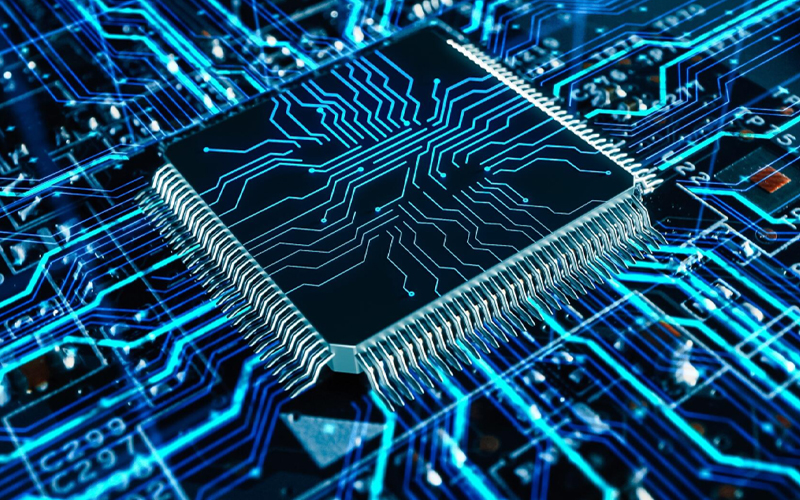Human beings are different from other living beings, not just in terms of thinking but also the emotions. Emotions usually drive their behavior and character. It is always understandable that one human can exhibit his feelings to the other while having interaction or conversation through emotions. It is now possible to teach machines to do the same by adding a capability called emotion recognition. This is like making the systems understand how and what humans feel. It is as transforming the machine learning intuitions into results, for instance products or services.
Artificial intelligence helps in detecting and recognizing emotions. AI helps in identifying, processing, and simulating human feelings and emotions. This is practically established by developing predictive and extrapolative models, discovering hidden patterns, and investigating their behavior. Businesses have been capitalizing on emotional AI in various applications like customer service, HR recruiting, business marketing, education, healthcare, and gaming. Behavior of the customer is highly influenced by their emotions. Understanding their emotions can enable empathy, reduce pressure, and, most importantly, aid in decision making. In one of its researches, Harvard business school has demonstrated that a tiny 5% increase in customer loyalty will result in 25% increase in profit. Technically, emotional AI is an area of computer science that helps machines gain an understanding of human emotions.
Industrial applications of emotional AI
In recent times, there has been a huge rise in customer interactions through their devices after the Covid-19 pandemic. The devices have been equipped with the capability to utilize surrogates to recognize emotions, such as facial expressions, body-language, motions, or voice to identify the customer’s emotions. Like how we use front cameras to unlock smartphones, the devices can track customers’ eyeballs and read the motions.
Motion sensors in the form of wearables like smart watches and fitness bands can detect heart rate and predict the customer’s mindset. It is used to detect frauds through their sweat, skin conductance, and heart rate.
Observing the usage of bank accounts in mobile apps or a webpage, the system uses the haptic interface of the mobile device. This reads the count of taps on a particular icon on the phone briefly. This can determine if the customer is upset or facing some issue with screen, or if the app is unresponsive. This will eventually propose the customer to raise an issue ticket for his terrible experience. The next thing will be sending notification reading the customer’s emotions. The device uses its inbuilt sensors like gyroscope, which is usually used for orientation purpose. Whenever the customers tilt or shakes the phone and tries to change the orientation multiple times, it means that he is unhappy and facing difficulty in using the device or the app.
Also, with the help of accelerometer, the app can determine whether the customer is calm and using the device without any issues. The vice-versa in terms of detecting the vibration, tilting, and moving in linear or random direction will tell that customer emotions towards it. In terms of emotional AI perspective, it is used to define the movement in a particular screen or application. These shall be a good indicator and provide an opportunity to advertise a new product to the customer.
Emotional AI is used to assess new product or the campaign impact, also sets benchmark over the competitors. Social monitoring is done through platforms like Facebook, Instagram, twitter and even blog sites where they post their opinions, interests, and desires. Reading these comments and analyzing them through the Natural Language processing and emotional AI, the system understands the customers’ feelings and emotions towards the topic they comment. This will be vital in understanding or getting feedback on any products or services in the industry.
From the perspective of voice recognition where the user speaks to a device and asks for a response, if the system provides or asks for a same question/response repeatedly, the user gets upset. Depending on the tone variations, the system identifies that user is unhappy with the interaction and confirms termination. Hence, based on these, the system shall respond back promptly and ensure the user gets right response appropriately.
Some examples of emotions driving better results
The below listed are a few examples of businesses capitalizing emotional AI in various industries like health care, marketing, gaming, education, and customer service.
- Realeyes, a leading ad testing company conducted a study on 100+ car advertisements and collected data from social platforms to understand the video features that attract more audience. The research revealed a correlation between superior emotional performance and social advertisement success.
- AdMobilize, deployed by a metro rail company using emotional AI Analytics technology to optimize their ads along the subway according to passengers’ emotions. The software is integrated with the security cameras to measure the face metrics that tell age range, gender, gaze through rate, emotion, attention span, and direction. These further enables the advertisement company to categorize passengers’ expressions and install their ads accordingly.
- Vedantu, an online teaching platform, leveraged Entropik Tech emotional AI solution to enhance their syllabus content and coaching strategy. The technology depends on eye-ball movement and facial-coding algorithms to examine emotional triggers and map customers’ journeys. Online sessions are recorded and studied through the API to produce attention, commitment, and fatigue metrics for both the teachers and students.
- Cognovi Labs, an emotional AI analytics developer, produced a Coronavirus panic Index to monitor user feelings and trends about the spread of Covid-19. The AI solution relies on analyzing data from people’s emotions about the pandemic though social media platforms, blogs, and forums to foresee how people in specific neighborhood react to the pandemic.







